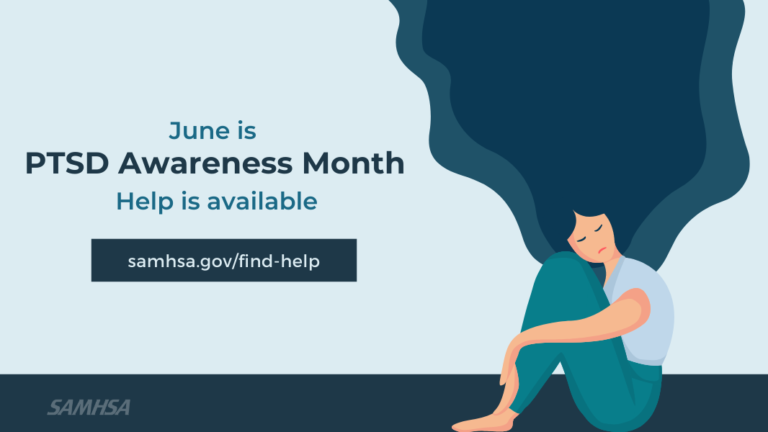Although often associated with combat veterans, Post Traumatic Stress Disorder (PTSD) is a mental health condition that can affect any person of any age after experiencing or witnessing a traumatic event. Such traumatic events may include military combat, sexual or physical violence, natural disasters, or serious accidents.
The term “PTSD” first appeared in 1980 in its third edition Diagnostic and Statistical Manual of Mental Disorders. However, earlier medical publications referred to conditions described as “soldier’s heart”, “shell shock” and “war neurosis”. With the prevalence of PTSD in the military community, it’s no surprise that the effort to create awareness began as a tribute to a service member. On June 27, 2010, PTSD Awareness Day was established in recognition of Staff Sergeant Joe Biel, a National Guard service member who experienced PTSD after two tours in Iraq and died by suicide in 2007. In 2014, the federal government designated the entire month of June as PTSD Awareness Month.
Many organizations participate in PTSD awareness activities throughout June to highlight information about PTSD symptoms, including available treatments. This year, PTSD awareness certainly plays a critical role, as communities across our nation have recently experienced mass casualty events involving children, as well as individuals targeted for being members of diverse populations. Additionally, next month, the National Suicide Prevention Lifeline will become available by calling 988 – the country’s first three-digit mental health crisis number. This is a vital step in increasing the accessibility and use of mental health crisis interventions and resources. Years of clinical research show that effective treatments for PTSD include psychotherapies and medications. Some of them evidence-based treatments include Prolonged Exposure, Cognitive Processing Therapy, and Eye Movement Desensitization and Reprocessing.
According to National Center for PTSD about six percent of the population will have PTSD at some point in their lives, and about 12 million adults in the United States have PTSD during a given year. Additionally, the number of veterans with PTSD varies by season of service. About 11-20 out of 100 veterans who served in Operation Iraqi Freedom or Operation Enduring Freedom have PTSD, and each year, about 12 out of 100 Gulf War veterans have PTSD. It is estimated that about 30 out of every 100 Vietnam veterans had PTSD in their lifetime.
After a traumatic event, it’s normal to have stress reactions, such as disturbing memories, feeling agitated or having trouble sleeping. If the symptoms are present for more than a few months, a person may have PTSD. People with PTSD may experience nightmares or unwanted memories of the trauma, avoidance of situations that bring up memories of the trauma, heightened reactions, anxiety, or depressed mood that affect their ability to perform in their social life, work life, or other important activities. PTSD in children can present differently. They may believe that there were signs that the trauma was about to happen and then look for similar signs thinking that this will help them avoid future trauma. These children may exhibit hypervigilance and executive function challenges that hinder academic performance. PTSD symptoms may also appear through their play (eg, playing shooter games after a school shooting).
If you or a loved one is experiencing symptoms of PTSD, it’s important to know that there are multiple treatment and support resources available:
- Find treatment through SAMHSA’s treatment locators and helplines. These services are often free, confidential, anonymous and available 24/7.
- Call or text the SAMHSA Disaster Helpline for immediate support for people experiencing emotional distress related to natural or man-made disasters. Services are provided by trained crisis counselors 24/7.
- I hear from Veterans, family members, and mental health providers share their experiences with PTSD and PTSD treatment.
- Check out the National Child Traumatic Stress Network resource at how to talk to kids for mass violence.
- Learn about First Responder training opportunities to recognize and address various stressors and how to build health behavioral resilience.
Additionally, there are many resources for providers interested in increasing their ability to respond to the needs of individuals experiencing PTSD symptoms:
We can all help spread the word for PTSD awareness. Individuals, families, behavioral health providers, and communities play a vital role in addressing the needs of trauma survivors and people living with PTSD.
